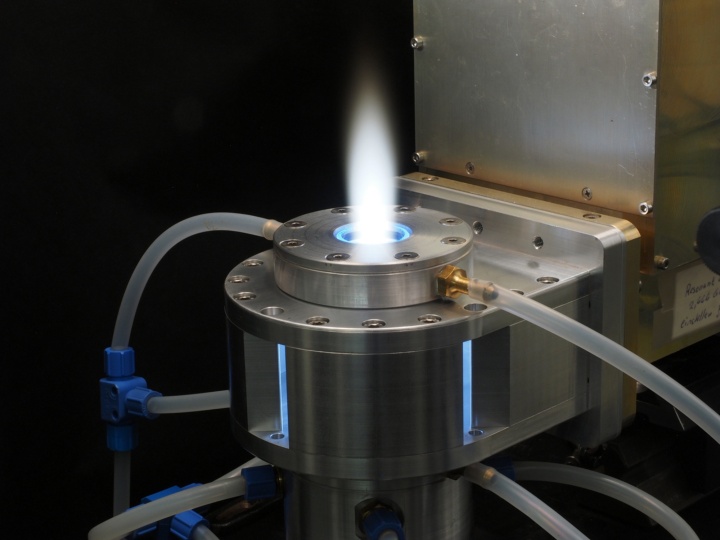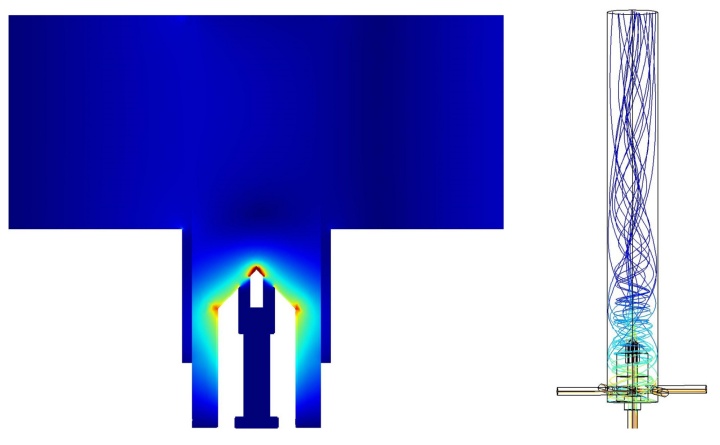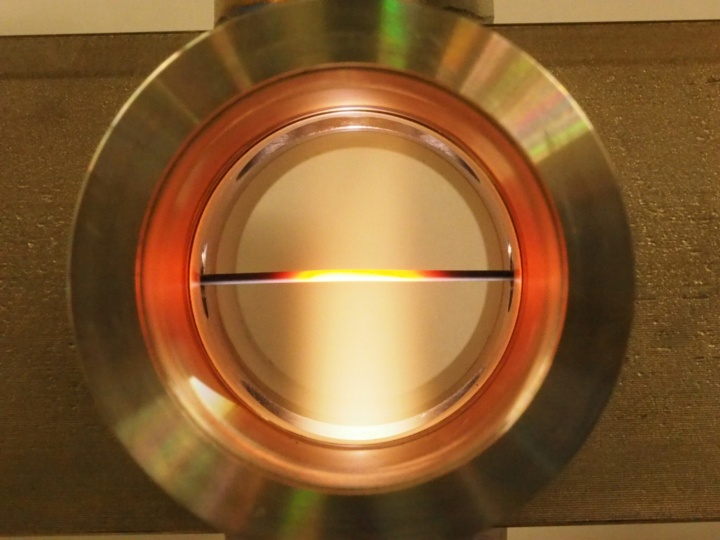Since electricity from renewable sources of energy is subject to fluctuations, energy storage on demand plays a crucial role to create a reliable grid system. The CO2 conversion into syngas or higher hydrocarbons via a plasma assisted gas conversion powered by renewable energy is one promising approach towards energy storage. To make this power to gas concept beneficial over other technologies it is of critical importance to improve the energy and conversion efficiency of this process.
On the basis of preliminary tests and technological requirements for a microwave plasma unit for CO2 conversion a modular plasma torch consisting of a cylindrical and a coaxial resonator has been constructed. This plasma torch enables a self-ignition and stable operation of a CO2 plasma over a wide range of parameters as well as a flexible rearrangement of the different components to ensure the possibility to adapt to different requirements. The CO2 plasma is investigated via optical emission spectroscopy and mass spectrometry and by tuning the CO2 flow rate and microwave energy, the energy and conversion efficiency can be adjusted.
Via a FEM-Simulation program a model of this plasma torch has been developed and the electric field distribution and the gas flow inside the plasma torch have been investigated to optimize the configuration and hence establish the most suitable operation conditions.
While improving the energy and conversion efficiency, it is also important to remove the oxygen contained in a CO2 plasma in order to produce syngas, which is a mixture of e.g. carbon monoxide and hydrogen. For this purpose a tubular reactor, which can be connected to the microwave plasma torch, has been constructed, such that a ceramic capillary can be placed in a gland sealing inside the reactor. The capillary is purged with Argon and the oxygen concentration is measured as a function of time for different volume flow rates of the carrier gas, different microwave powers and a wide variety of ceramic capillaries to identify the best operating conditions for the decomposition of CO2 in an oxygen-permeation membrane reactor.
Several Bachelor’s and Master’s theses are issued in the framework of this dissertation. For further information please contact the person below.

Irina Kistner M.Sc.
Ph. D. Student, Plasma Technology

Andreas Schulz
Dr.-Ing.Research associate, Plasma Technology




